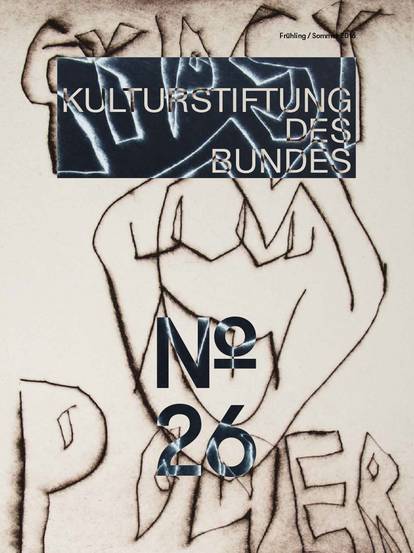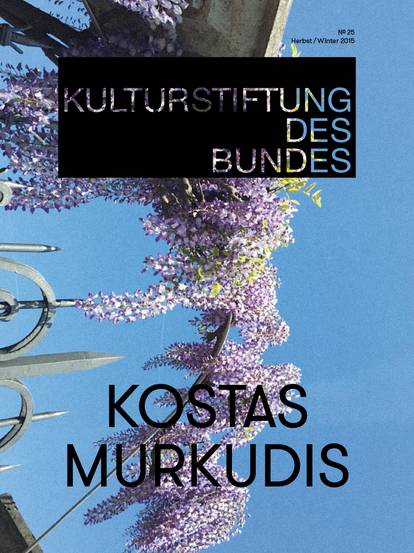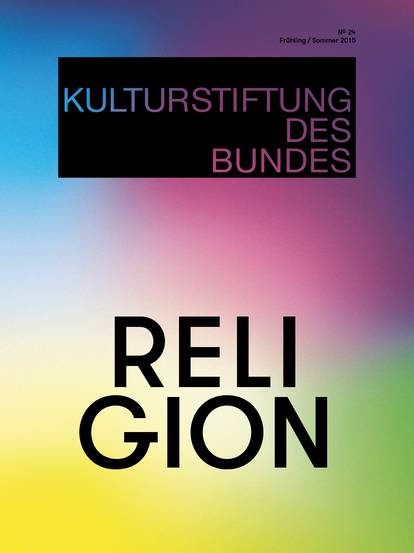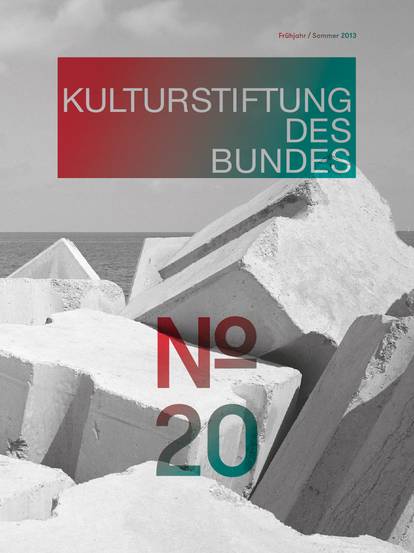Do artists traditionally possess a particular affinity to rapture and ecstasy?
You have to imagine the first artists as being ritualists. This is the conclusion Robert Calasso proposes in his wonderful study Ardor, dedicated to Vedic culture as it existed 3,000 years ago in India. The Vedic sacrificial cult possessed a very pronounced relationship to ecstasy. The soma, a mysterious substance, was considered the mother of all intoxicants. If there is truly a close relationship between art, ecstasy and the ritualistic act, it does not mean that the sense of aesthetics arises from mere self-indulgence. Rather, the rapture builds within the ceremony which is filled with an endless number of instructions and rules which apply to the smallest detail.
Art is both rapture and rules.
Are you more interested in enabling people to experience something outside social reality, or rather allowing them to step “outside themselves” in order to perceive themselves differently?
Without divestment, there’s no art. My works are forms of self-distancing which in ideal circumstances provide viewers with a different horizon of perception. This process shouldn’t be confused with some form of escape from reality. Only through distance, through rapture do we have the possibility of gaining new insight to both art and society.
Has the need to experience a “different state” become more urgent nowadays?
Most statistics indicate that the consumption of intoxicating substances among young people is falling everywhere in Europe. This means that drugs are not being used so often to achieve different states of consciousness. It could well be that technologies have now assumed this role. Researchers have come to a general consensus that our presence in social media influences our neuronal reward system. Liking, sharing, chatting are the highs of the 21st century. It’s no reason to succumb to cultural pessimism, but this finding certainly provides ample material for art. What does it mean when small ecstatic explosions in our brain no longer depend on our immediate physical social environment, but rather shift to the space and time of the digital sphere?
More and more people are looking for a different reality – through drug consumption, extreme sports or pornographically induced desire. To what extent do these “lonely” forms of ecstasy reflect a retreat from social reality?
According to Michel Houellebecq in his 1996 essay “La fête” in the French youth magazine 20 ans, the aim of ecstatic experience is to take a holiday from oneself. In this way, we can forget – at least temporarily – our own mortality and the insurmountable feeling of loneliness which goes along with it. The view that contemporary forms of being “outside oneself” are exactly what enables us to become better acquainted with our true selves, is rather difficult to square up with the original purpose of ecstasy. Perhaps from this point of view, we can better understand the remarkable rise of performance art. On one hand, it often highlights the suffering we experience from isolation, but on the other, in the process of jointly observing and understanding this isolation, it becomes community-building.
Do you fear or welcome social, mass-organised ecstasies?
The last great social rapture in Germany – but not only there – was entirely dominated by beats. The triumphant arrival of electronic music initially led to a relatively limited number of raves, morphed into mass festivals like the Love Parade which reached their climax at the end of the 1990s. What was amazing was how deeply this phenomenon divided the intellectual world and the art world. The one side claimed to recognise an ominous echo of a dark past. Didn’t such drug-induced, music-fuelled cadences resemble the lockstep of military parades? And didn’t the urge to become part of a homogenous mass hint at a nationalistic, if not fascistic, yearning? On top of that came the growing mistrust of the theory against pop culture which had long harboured an emancipatory potential when, after the fall of the Berlin Wall, Neo-Nazis were seen wearing Public Enemy t-shirts. In hindsight, I would agree with those who recognised a utopian moment in the Love Parade: an ecstasy which not only tied East and West Germany in peaceful celebration, but also different social classes which have since become rather polarised and increasingly estranged. This mass event was a place of encounter which no longer exists.
Questions by Friederike Tappe-Hornbostel

![[Translate to English:] Magazine 38](/fileadmin/_processed_/f/1/csm_Magazin38_Cover-Vorschau_921x1230_689f428dc3.jpg)
![[Translate to English:] Magazine 37](/fileadmin/_processed_/b/c/csm_Mag37_Cover-Vorschau_921x1230_b5129fdb2a.jpg)
![[Translate to English:] Magazine 36](/fileadmin/_processed_/2/a/csm_Cover_Magazin36__issuu_2f3cef97bb.jpg)





![[Translate to English:] Magazine 30](/fileadmin/_processed_/c/b/csm_magazin30_vorschau_9005f773d3.jpg)














